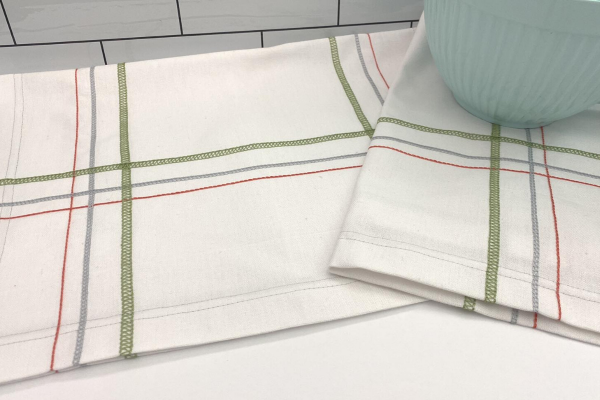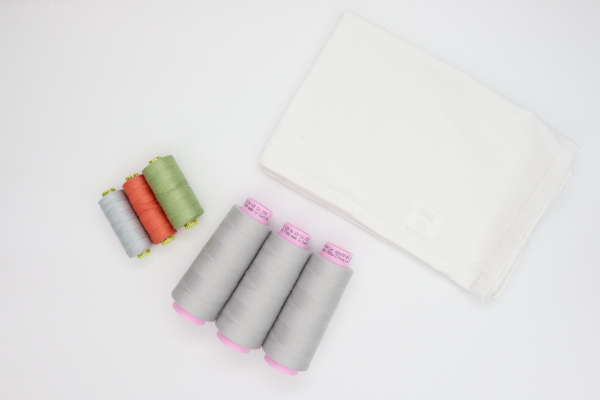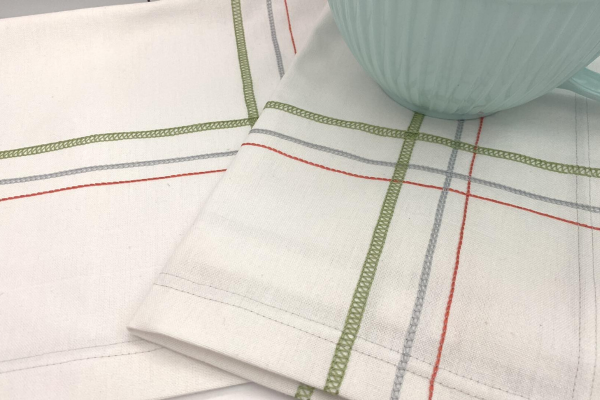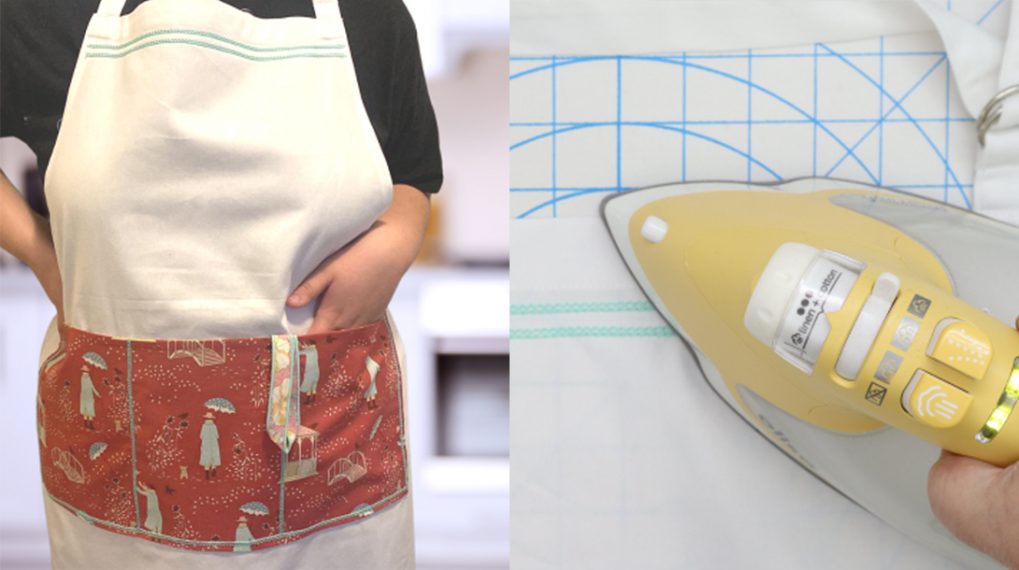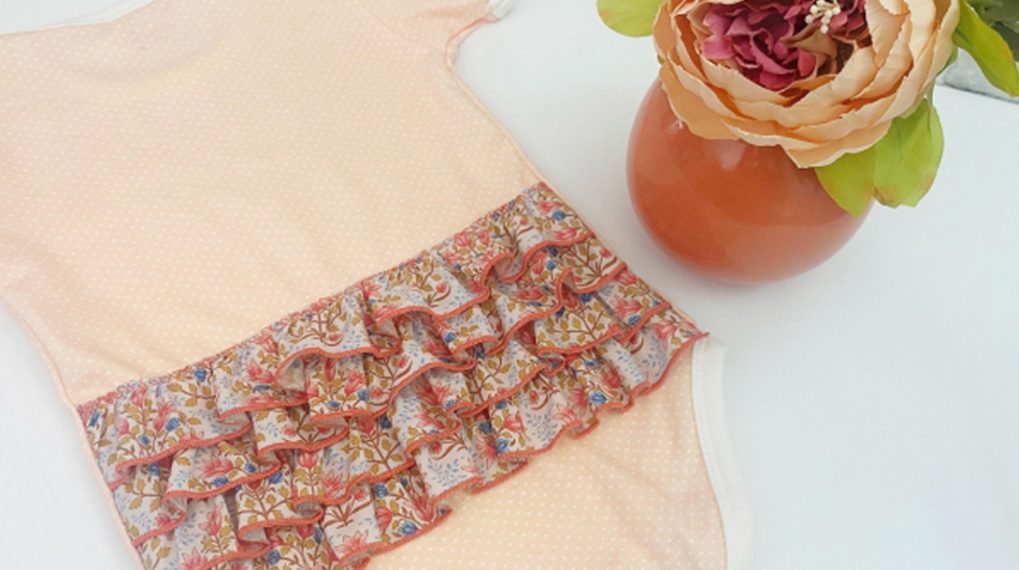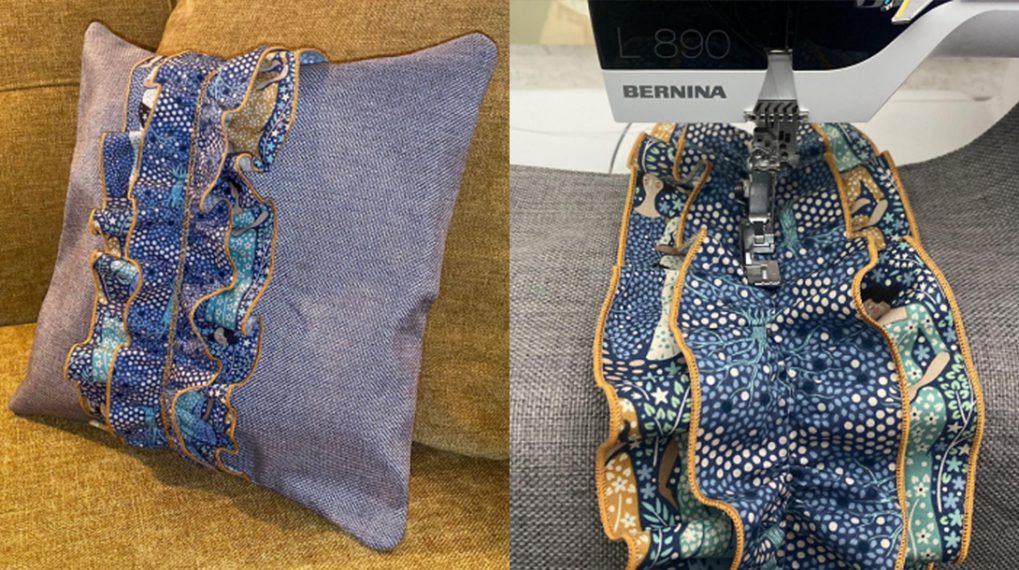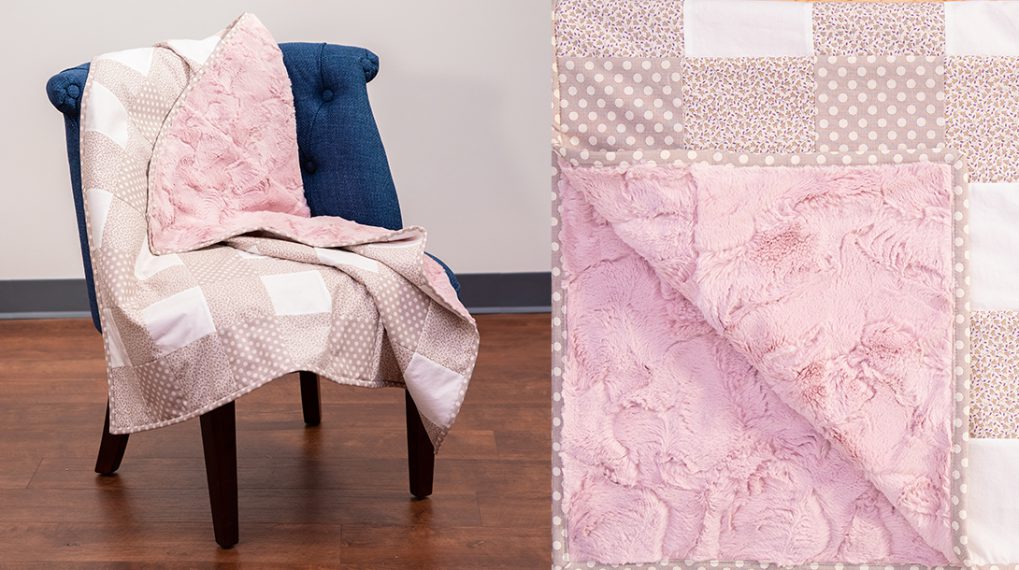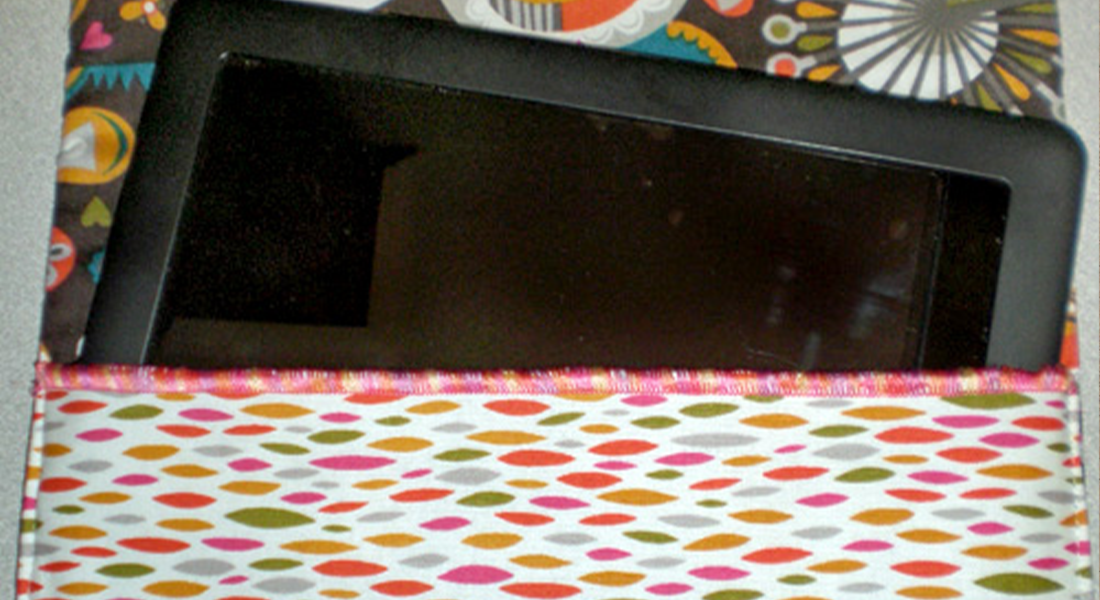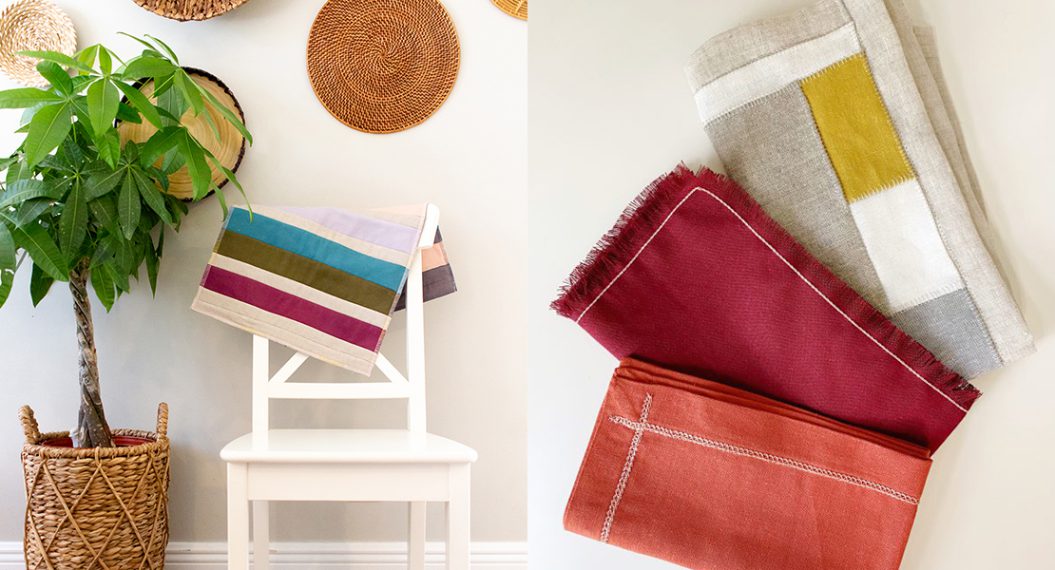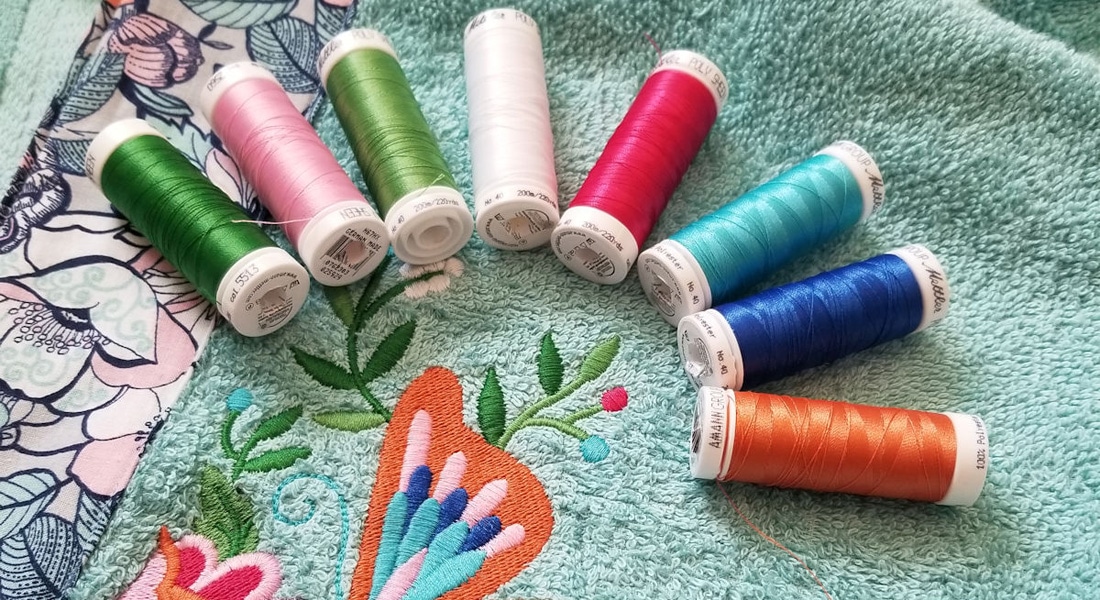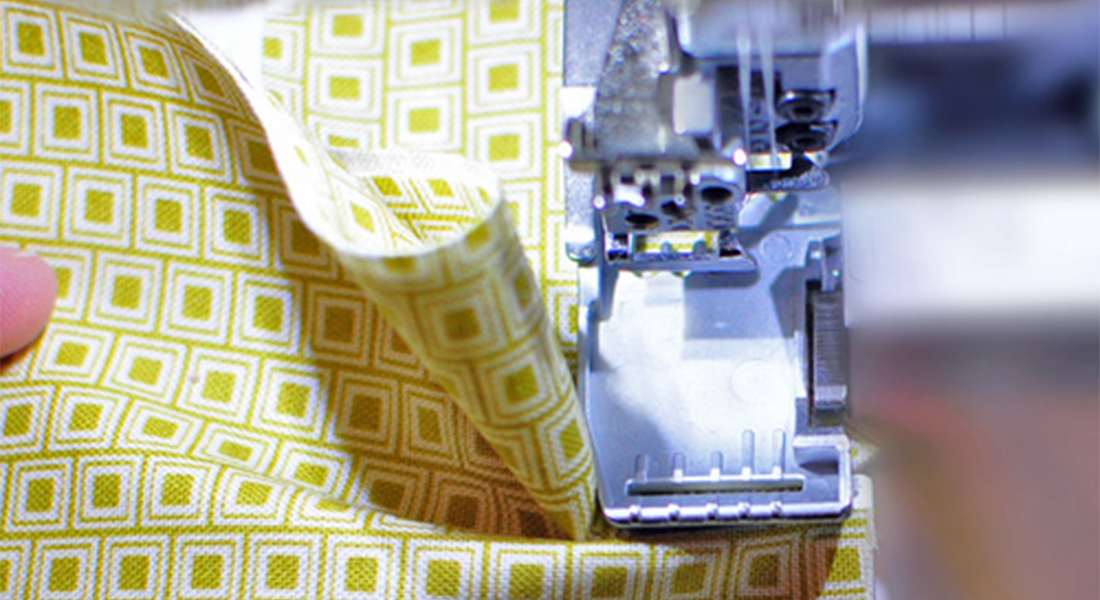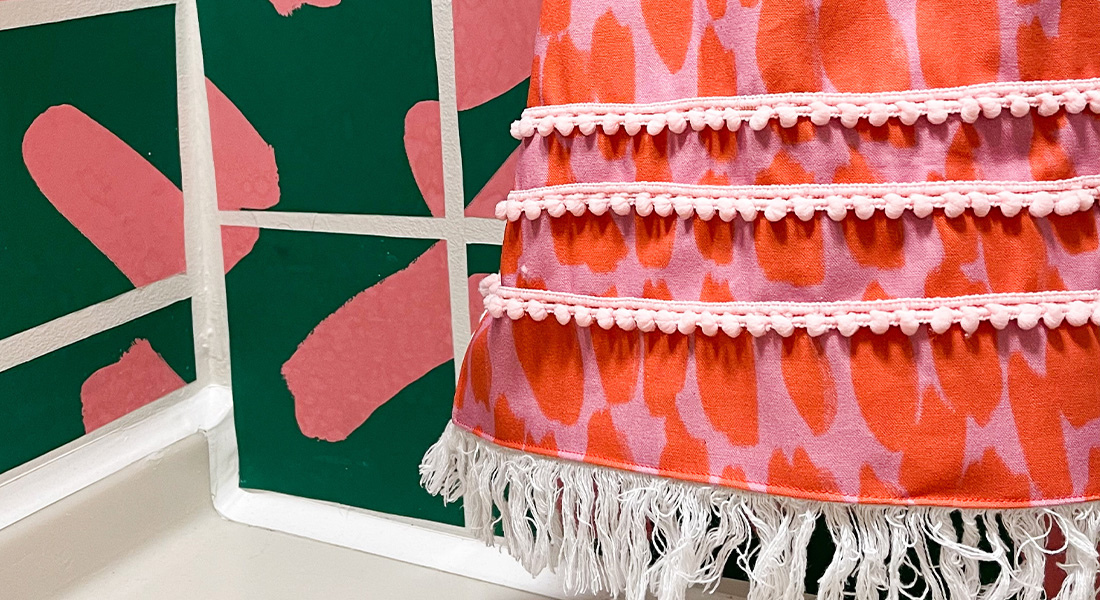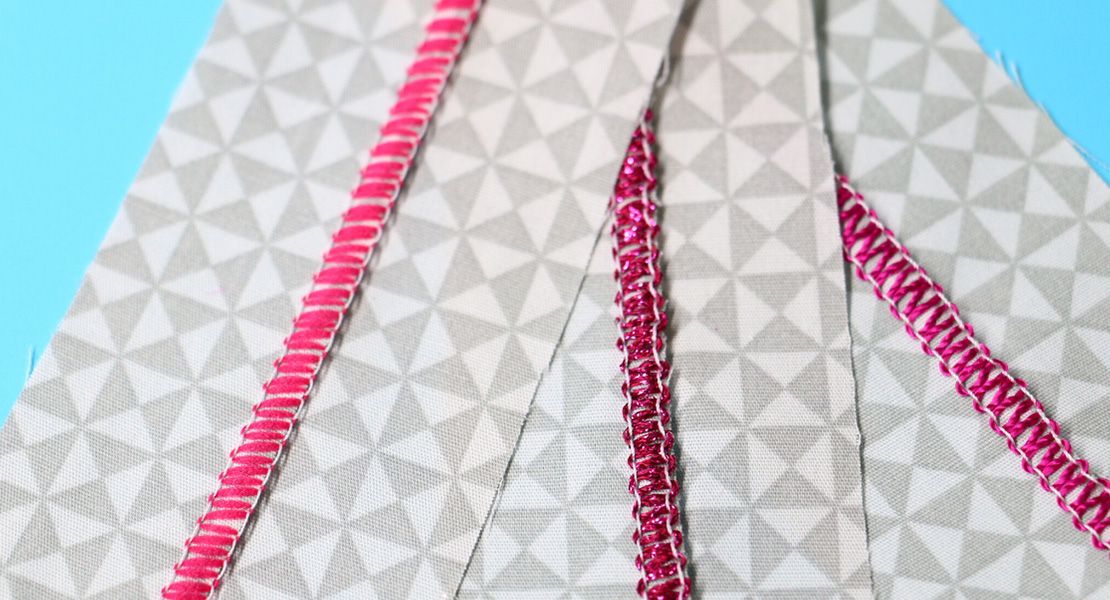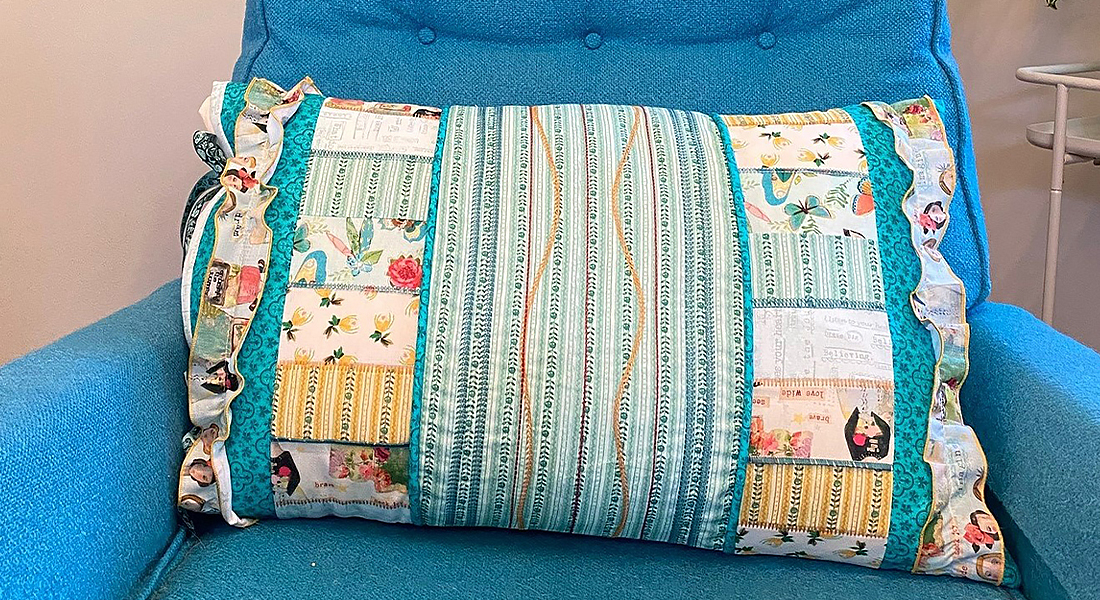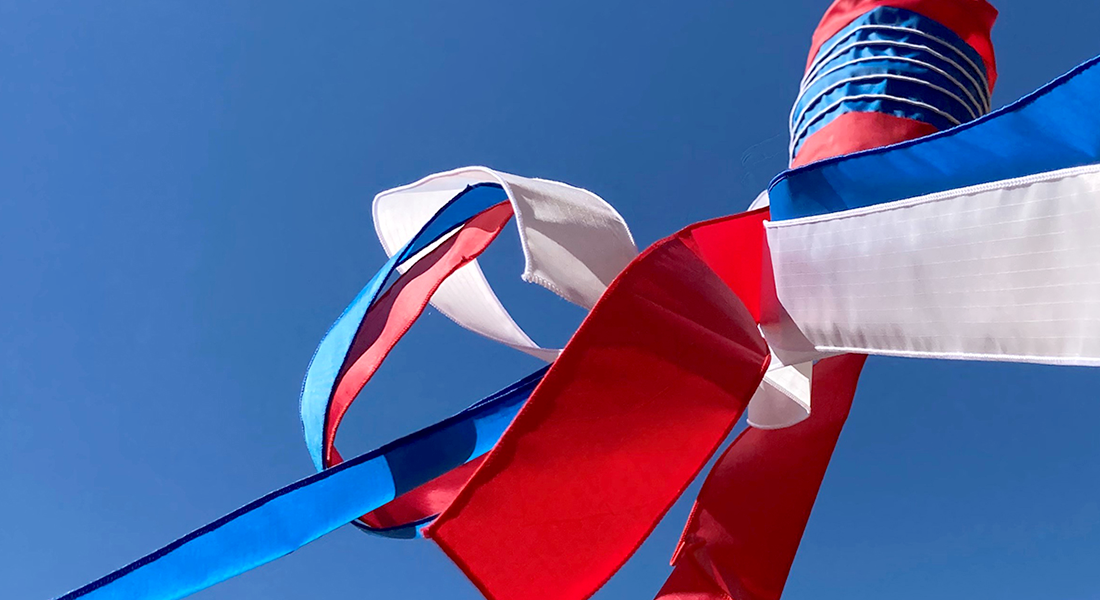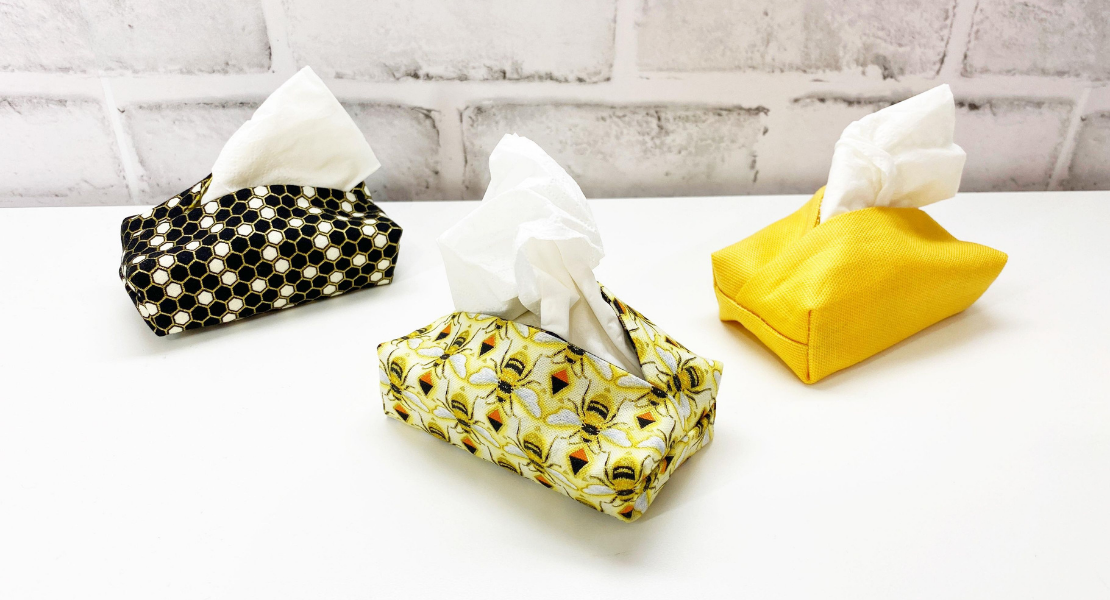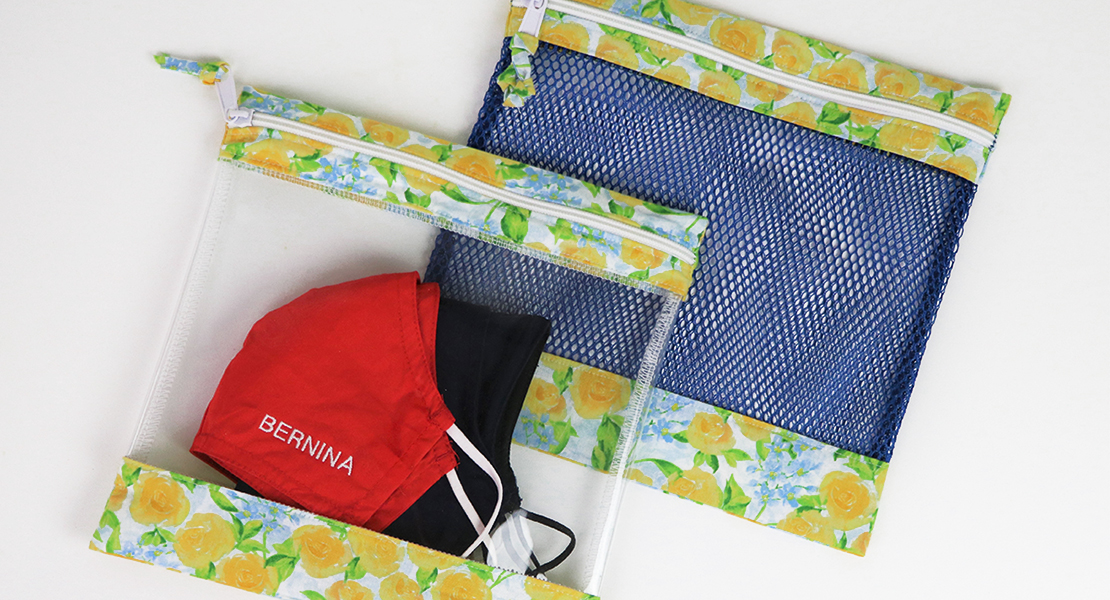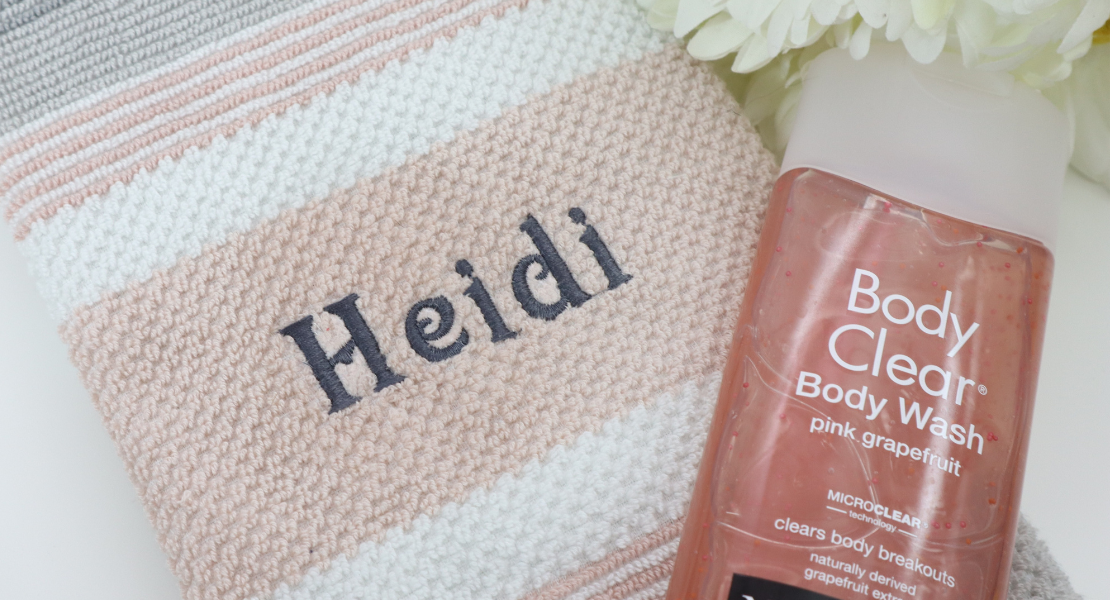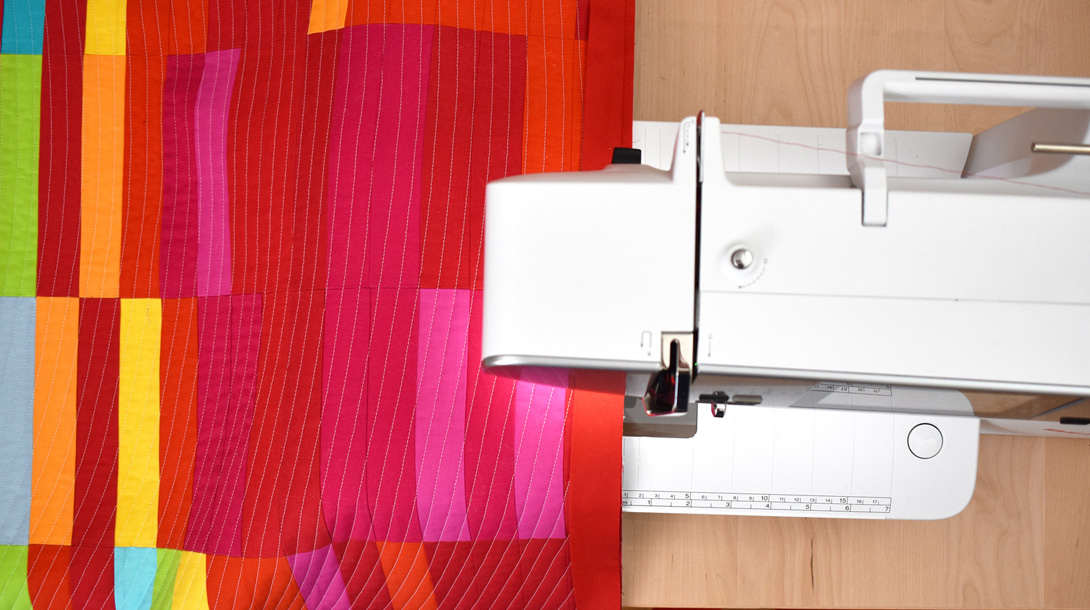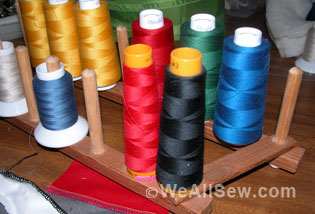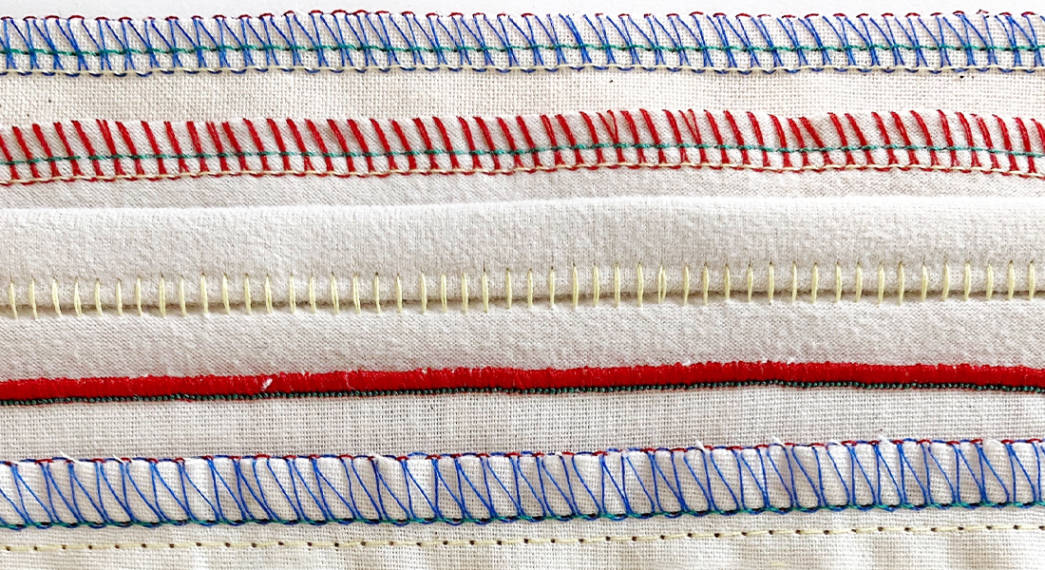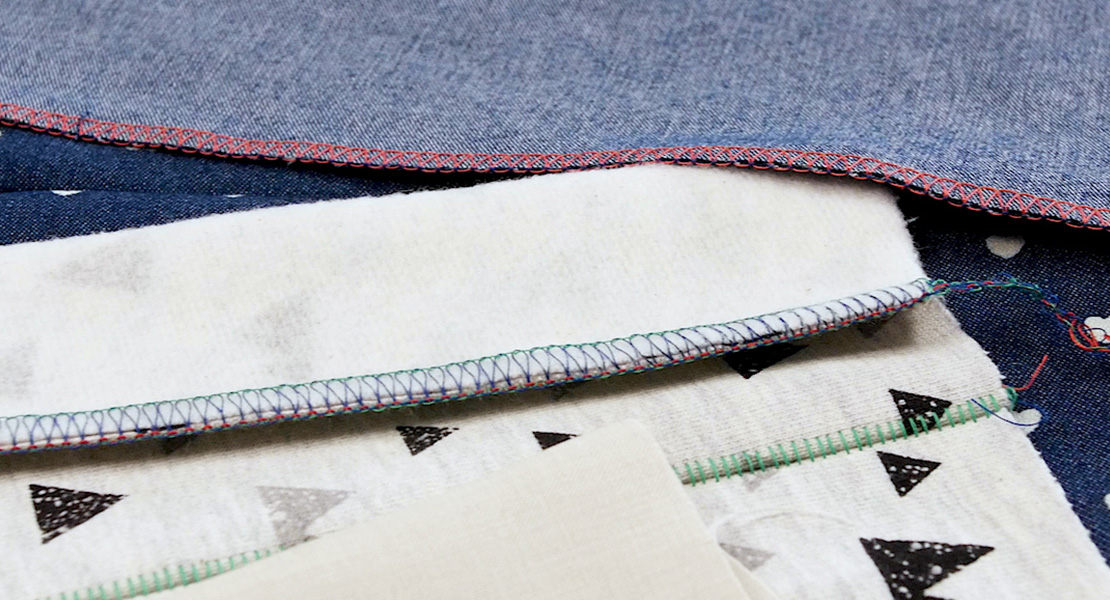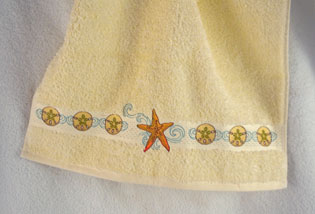Boring to Beautiful Blanks with Your Serger, Part Three: Towel
Blanks aren’t just for embroidering on anymore. They are a great way to practice serger stitches and finish a useful project. In this four-part series I’ll be showing how you can take an Apron, Onesie, Towel, and Pillow and go from boring to beautiful. You will get a chance to see various serger techniques, unique threads, and some additional presser feet you might want to add to your presser foot collection. During this series, I will be using the BERNINA L 890 serger for all four projects. Let’s get stitching.
Techniques and Stitches
In this towel project you will learn these stitches in order to create the plaid effect:
- 2-Thread Chainstitch
- 3-Thread Coverstitch Narrow (LC-CC)
- 3-Thread Coverstitch Wide
Materials (width by height)
- Tea Towel/Dish towel
- Wonder Clips
- Marking Pen i.e Frixion Pen
- Iron/Pressing surface
- Cutlery:
- Fabric shears
- EZ Hook n Snips i.e. Sookie Sews
- Rotary cutter, mat, and ruler
- Wonder Tape
- Thread:
- Chain/Cover foot #C13
Steps
- Press the towel to remove creases.
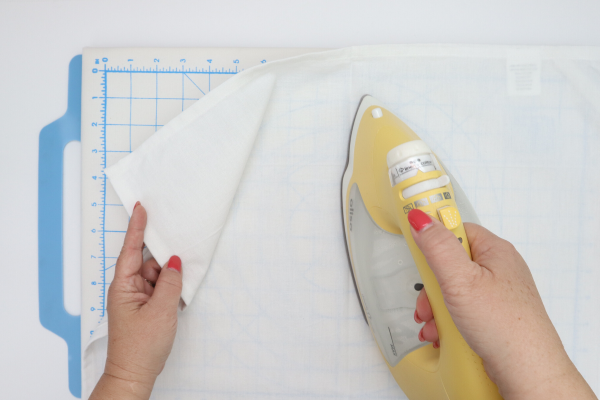
- Cut the hem off on all four sides. This will mean removing the tag and towel loop most likely. You can add the loop again later if you desire but I will not be covering that in these instructions as my towels hang on cabinets in my kitchen. Use fabric shears or rotary cutter. Once cut down it measures 19″ x 26″.
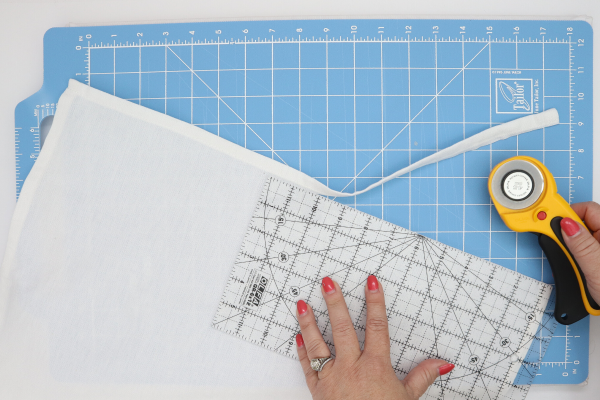
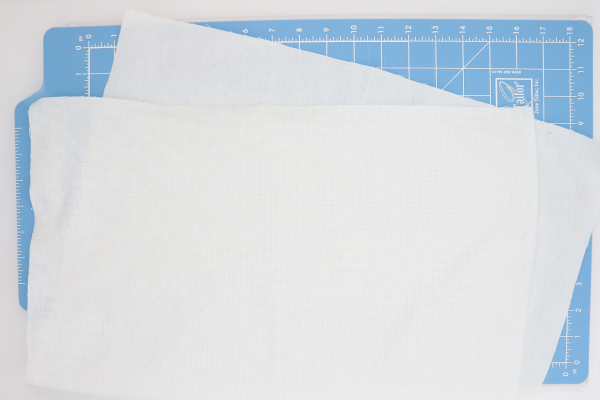
- Decide the plaid layout and use marking pen and ruler to mark on the wrong side as you will be stitching from the wrong side and the decorative stitches will be on the right side. I used the measurements below to get my plaid. Each cluster of lines has an outside, middle, and inside line. The outside line will be a chainstitch, middle will be 3-Thread Coverstitch Narrow, and the inside line will be a 3-Thread Coverstitch Wide.
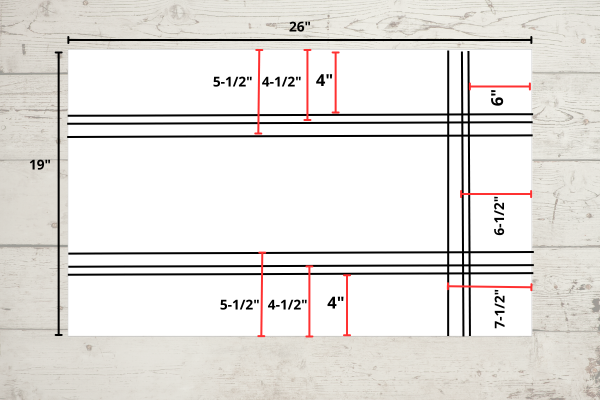
- Set up the serger for 2-Thread Chainstitch with standard thread in the needle and 12 wt thread in the chain looper.
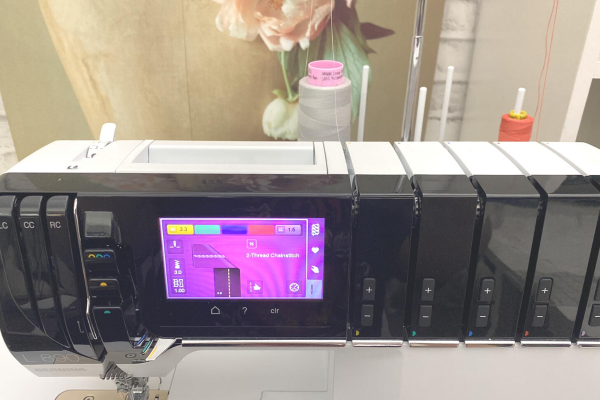
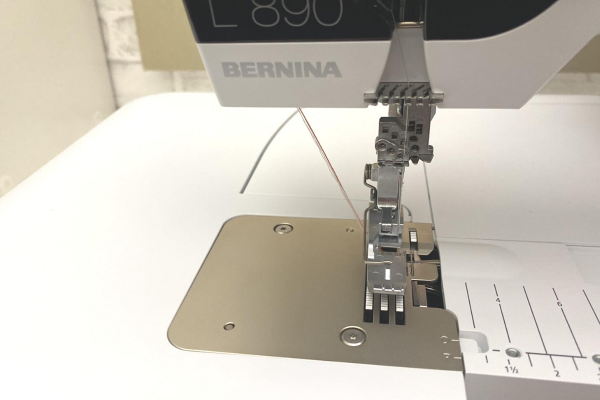
- Stitch each outside line with the 2-Thread Chainstitch, begin stitching on the fabric and at the end raise the presser foot and gently pull the fabric towards the back which will lock the stitches. On the front of the presser foot are notches which correspond to the needle placement. Align the far right notch with the line and your needle will stitch right on top of it. Cut thread tails at beginning and end.
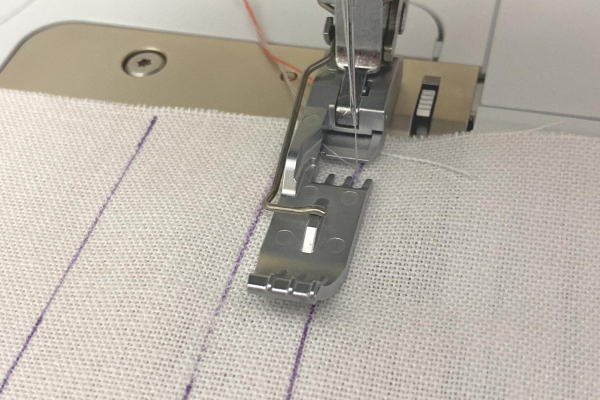
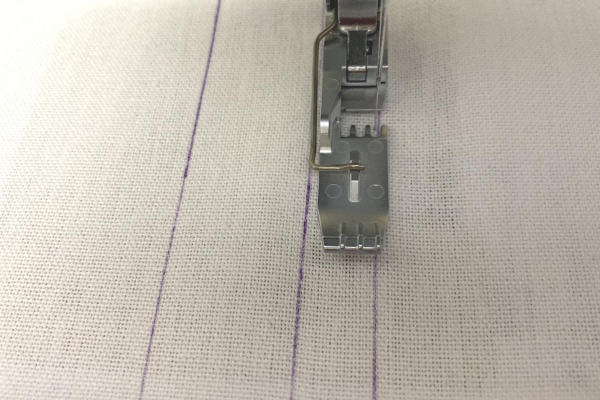
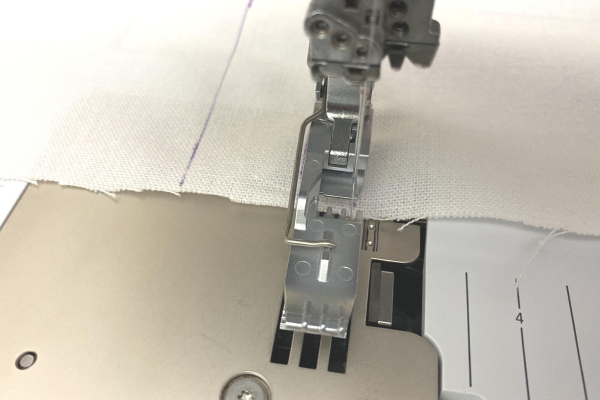
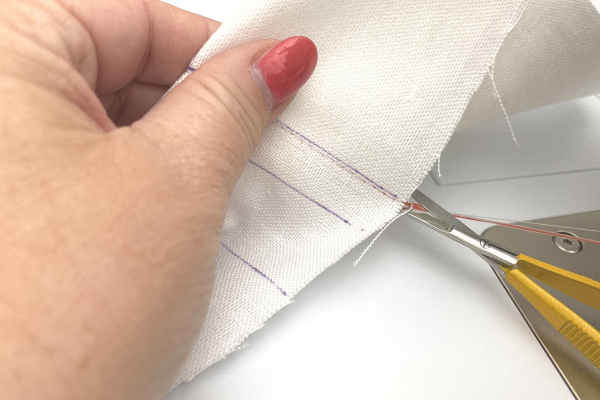
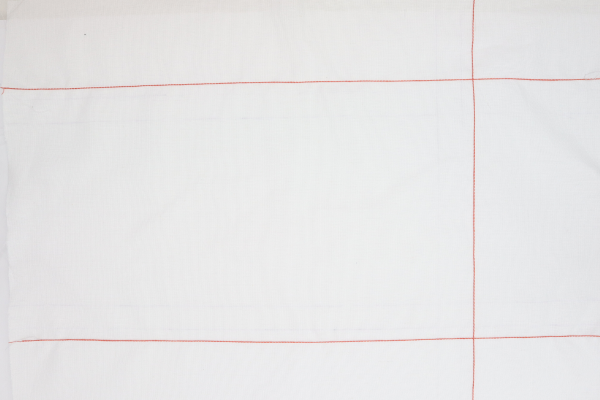
- Set up the serger for 3-Thread Coverstitch Narrow (LC-CC) with standard thread in the needles and 12 wt thread in the chain looper.
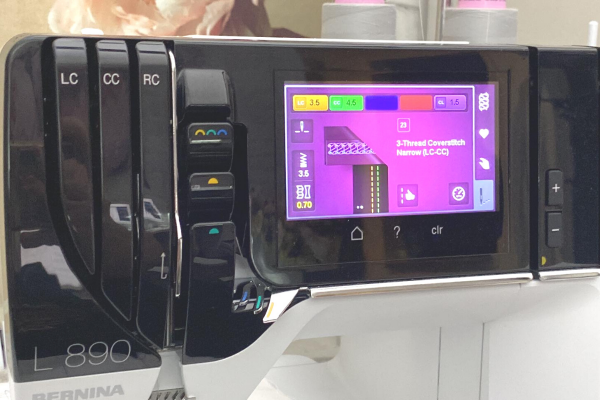
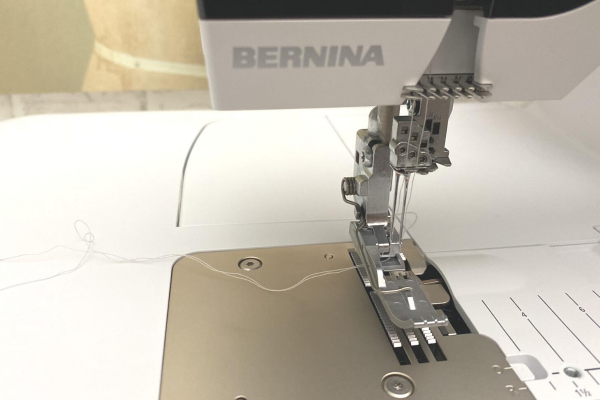
- Stitch each middle line with the 3-Thread Coverstitch Narrow (LC-CC), begin stitching on the fabric using the far left and center notches straddling the line. At the end raise the presser foot and gently pull the threads forward with the CS Lock tool and clip the needle threads. Pull the fabric towards the back which will lock the stitches. Cut thread tails at beginning and end. Test the stitch and see how it looks and adjust differential feed if it is puckering. I lowered mine to .70.
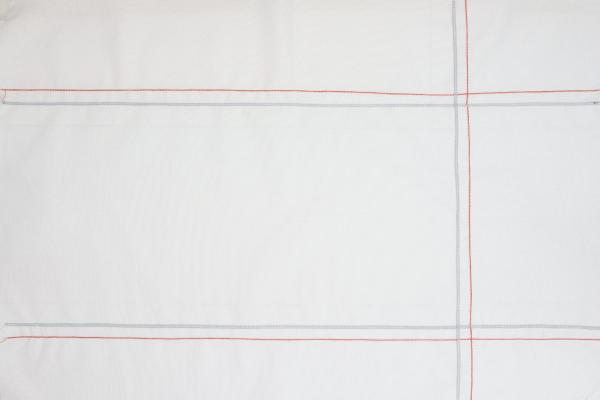
- Set up the serger for 3-Thread Coverstitch Wide with standard thread in the needles and 12 wt thread in the chain looper.
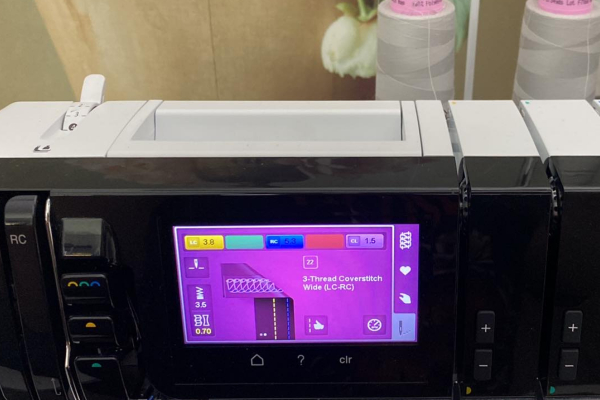
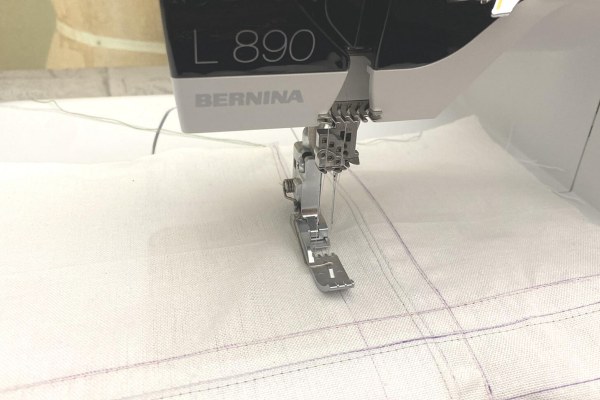
- Stitch each inside line with the 3-Thread Coverstitch Wide, begin stitching on the fabric and align the center notch with the line. At the end raise the presser foot and gently pull the threads forward with the CS Lock tool and clip the needle threads. Pull the fabric towards the back which will lock the stitches. Cut thread tails at beginning and end. Test the stitch and see how it looks and adjust differential feed if it is puckering. I lowered mine to .70.
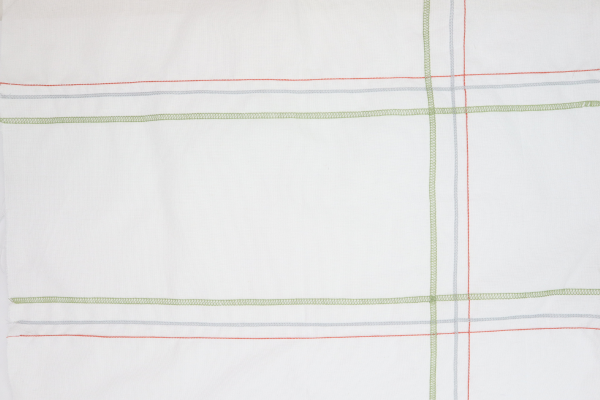
- When finished stitching all the plaid lines, press the marks away.
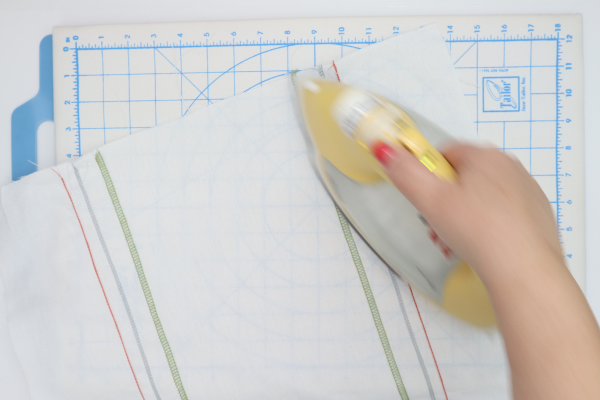
- Create a 1″ hem on each long side.

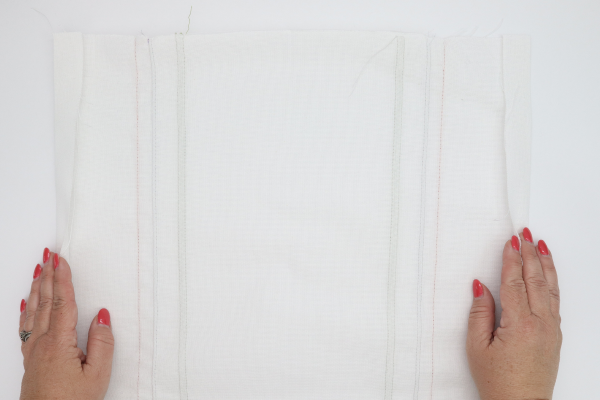
- Change chain looper to standard thread. Cover the raw edge with the coverstitch with two needles on top for each side. You want the raw edge to be covered with the coverstitch, so be sure the two needles are straddling, flip fabric to the back side to check.
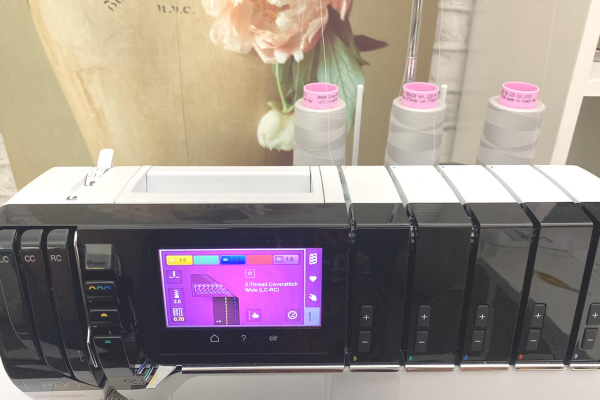
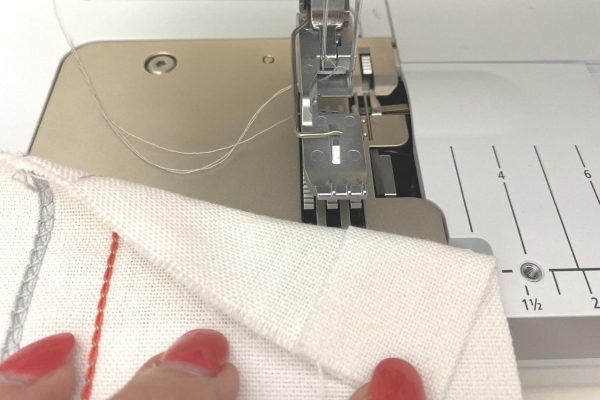
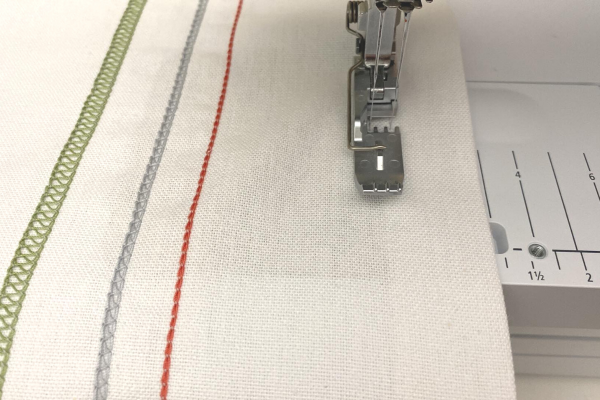
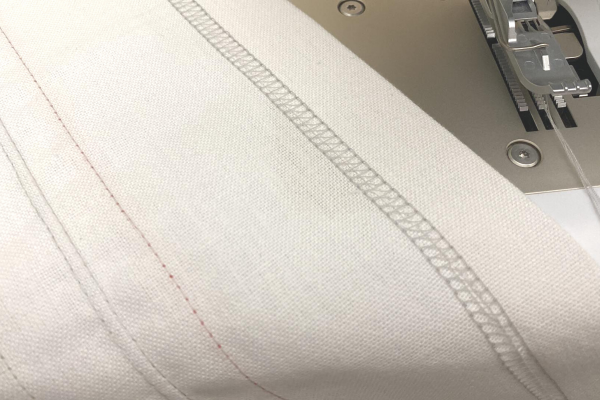
- Repeat with the two short edges.
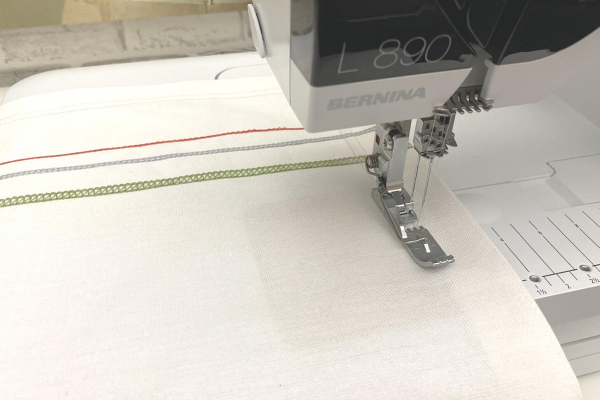
- When you are finished stitching both top and bottom short end hems, press, and use your towels!
I hope you enjoyed this boring to beautiful serger project and enjoy making all of my easy serger projects! When you make yours, please snap a photo and tag me @SookieSews and @BERNINAUSA!!
